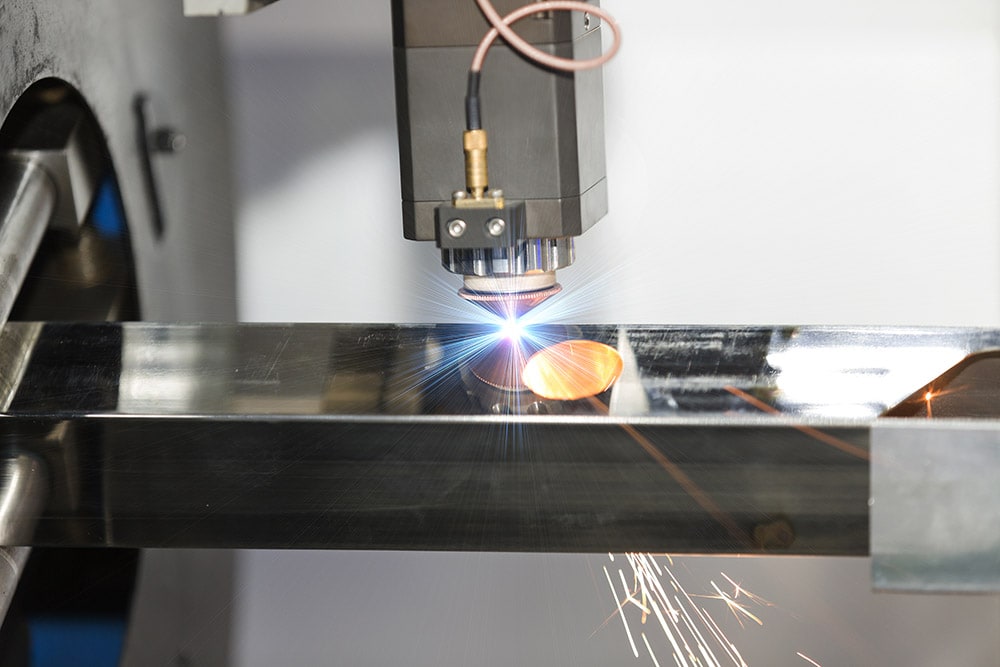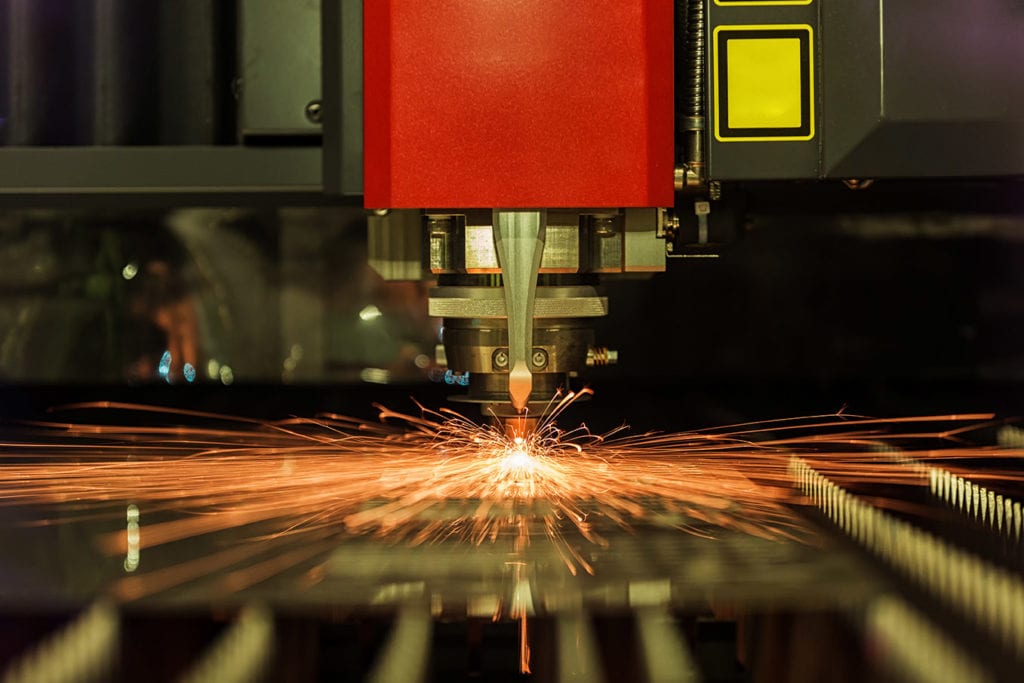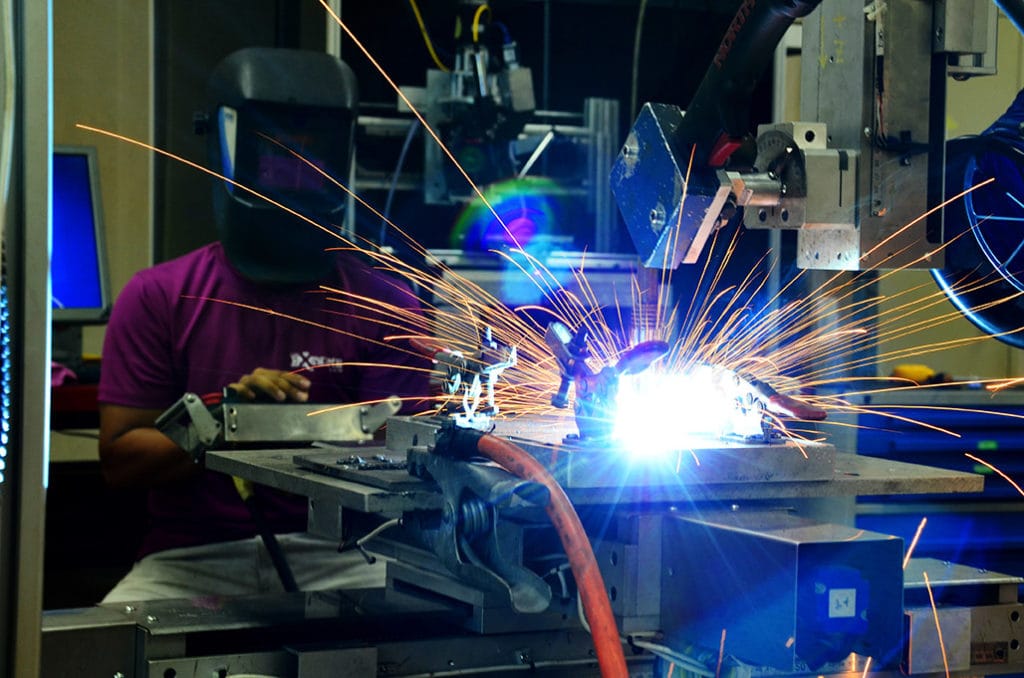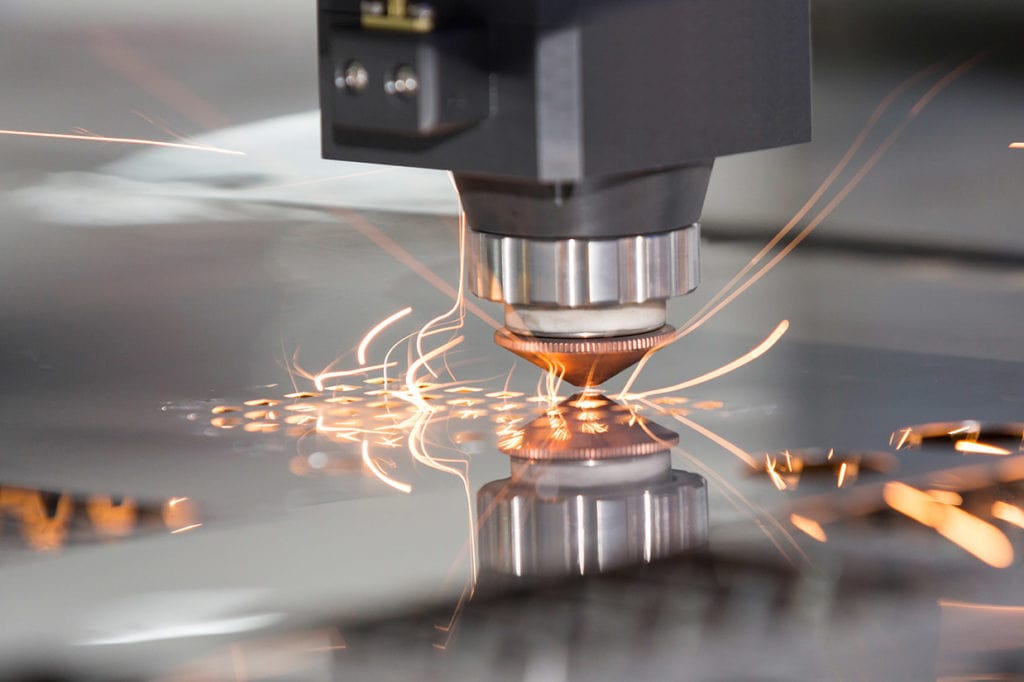What is a Keyhole in Welding? A Complete Guide
Last Updated on

In particular welding jobs, you need deep heat penetration, and higher power density amounts to accomplish the results you want. It’s not an easy task taking into account the accuracy and heedfulness that manual welding tasks need.
Many welders use an automated approach called the keyhole heating method to perform such comprehensive tasks. If you would love to know more about keyhole welding, then read on to learn more.
What is Keyhole Welding?
Keyhole welding is a kind of laser welding. You can use it for open groove weld joints and butt joints. In keyhole welding, a gap is left between the two parts that you’re welding together. The two sides of the plates burn out to create a weld pool if predisposed to heat.
In keyhole welding, the metal not only melts but also evaporates. The evaporating metal forms a gas that presses the metal outwards. It, in turn, creates a hole similar to a keyhole. After this, the heat is aimed at the plates located a couple of inches away.
If you do this, the hole moves with the heat. Then, the melted metal fills in the hole, and this, in turn, creates the weld bead. You should be cautious to make sure that the keyhole doesn’t get too big.
In case it does, then the weld puddle falls out of the opening. Stop welding instantly if the keyhole grows large. Let the plate cool down before you begin the procedure again.
Provided the laser power is sufficiently strong, and the travel velocity isn’t too high, the hole stays open. Don’t apply excess heat, use an incorrect stick angle, or stay in the puddle for prolonged periods as this may cause issues with the weld joint.

How Does Keyhole Welding Work?
A keyhole weld comprises a deep, slender profile that has an aspect ratio of more than 1.5. The “keyhole” is a real hole in the metal which is caused by the material’s vaporization. It allows the energy gleam to permeate even more deeply.
Then, energy is delivered effectively into the joint and this maximizes the depth of the weld. It, in turn, restricts contortion on the metal.
Melted metal encloses the keyhole. Then, it flows and fills the space as the gleam moves through the material, sealing up the weld seam. Numerous factors must be regulated and kept in equilibrium to ensure that the keyhole doesn’t crumble in a way that stops the welding procedure.
It also helps get rid of porosity, which is gas pockets in the weld that attenuate it. A keyhole weld is potent and is recommended for structural welds and deep permeation.
You can use keyhole welding in applications such as tank bearing, turbine blades, or valves going into space. Both lasers and electron gleams can produce premium quality keyhole welds.
Is Keyhole Welding Doable?
If you have the finances to invest in the process, keyhole welding is workable. Also, if you need to weld thick metals frequently, keyhole welding is the ideal technique. Don’t use this technique if you’re not welding thick metals and you don’t require the heat it generates.

What Types of Metal Can You Weld Using this Procedure?
If your base metal has poor heat conductivity, then it results in the build-up of heat in a concentrated spot. It’s necessary for the keyhole welding technique. Some of the materials used in keyhole welding comprise high-alloy and Duplex steels.
On the contrary, if the heat conductivity is better, the less fit keyhole welding is. If you would like to connect steel alloys with the help of keyhole welding, then you need to know that distinct alloys react differently when it comes to heat conductivity as compared to unalloyed metals.
For instance, the heat conductivity in nickel is excellent. Nonetheless, if you use it in a nickel alloy, it exhibits poor thermal conductivity, making it ideal for keyhole welding.
Benefits of Laser Keyhole Welding
It’s the most common form of keyhole welding. In numerous processes, laser keyhole welding can be replaced by resistance spot welding. Nonetheless, the former method has several advantages that make it highly propitious. They are:
Increased Effectiveness
Resistance spot welding is a manual procedure that takes time, and its results aren’t consistent. Laser keyhole welding is mostly an automated process. You’ll end up saving a lot of time if you use this approach. Also, you’ll end up generating constant, and premium quality welds as the procedure is machine-controlled.
It’s Fit For a Wide Variety of Metals
When it comes to welding distinct metals, different chemical, physical, and mechanical characteristics of various materials dictate which procedure is perfect. Not every metal is easy to permeate through.
When it comes to alloys with high resistance, the keyhole approach verifies better because it makes the metal evaporate. It makes this welding procedure more tractable. This process uses a powerful laser gleam that helps variegate its applications.

Improved Control
In resistance spot welding, you have to apply pressure. It leads to indentation. Also, it dictates the levels of penetration that you can accomplish using this technique. The laser gleam regulates the level of penetration when it comes to laser keyhole welding.
Since the procedure is automated, it doesn’t require a lot of manual labor or any extra pressure required to form a weld. With keyhole welding, there’s no possibility of indentation on the metals.
Rapid Results
If you have thicker metals, keyhole welding is the perfect technique. It’s because it offers greater effectiveness and deeper penetration easily. You can also use it on thinner materials because it accelerates the procedure.
As the procedure is automated, it’s foreseeable and consistent. With it, the welder can create a premium quality finished product. Moreover, it lessens the work time by accelerating the procedure by three or four times the average velocity.
So, Is Keyhole Welding the Ideal Technique for You?
We hope that this article has been helpful and now you can select the most suitable welding technique to use when welding distinct metals.
You might also like:
- What is Resistance Welding and How Does it Work?
- Welding and Oxyfuel Cutting: What Colors are the Gas Hoses?
- What is Slag in Welding, and How Does It Work?
Featured Image Credit: Aumm graphixphoto, Shutterstock
